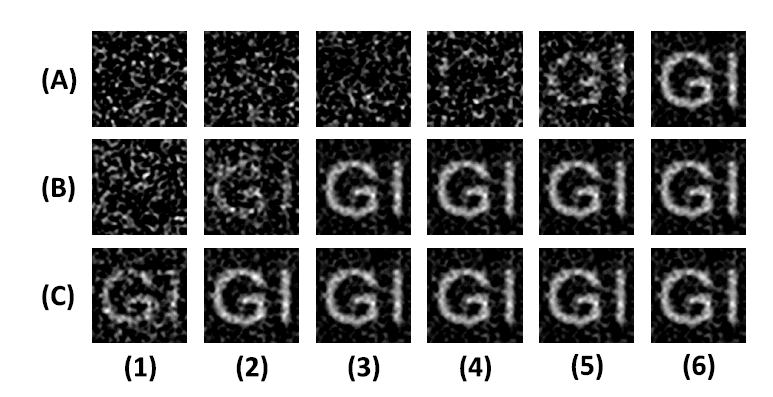Ghost imaging (GI) is a novel non-scanning imaging method to obtain a target’s image with a single-pixel bucket detector. Due to its capacity for high detection sensitivity, GI has aroused increasing interest in remote sensing, and a new imaging lidar system called GI lidar has gradually developed.
In remote-sensing GI lidar detection applications, background light is inevitable and its intensity may be greater than the intensity of the signal. Therefore, it would be very useful to clarify the influence of background light on the imaging quality of GI lidar systems.
Recently, a collaborative study led by Dr. SHENSHENG HAN and Dr. WENLIN GONG at Key Laboratory for Quantum Optics and Center for Cold Atom Physics of CAS ,Shanghai Institute of Optics and Fines Mechanics (SIOM) Chinese Academy of Sciences revealed the effect of background light on the imaging quality of three typical ghost imaging (GI) lidar systems (namely narrow pulsed GI lidar, heterodyne GI lidar, and pulse-compression GI lidar via coherent detection). By computing the signal-to-noise ratio (SNR) of fluctuation-correlation GI, their analytical results, which are backed up by numerical simulations, demonstrate that pulse-compression GI lidar via coherent detection has the strongest capacity against background light, whereas the reconstruction quality of narrow pulsed GI lidar is the most vulnerable to background light.The finding was published in Photonics Research.
Their theoretical and numerical results demonstrate that narrow pulsed GI lidar fails to reconstruct images when the power of the signal light is overwhelmed by background light, while heterodyne detection GI lidar and pulse-compression GI lidar via coherent detection can still reconstruct images with a long-duration pulse. Of the three GI lidar systems, pulse-compression GI lidar via coherent detection has the best anti-background-light performance.Since the architecture of the pulsed GI lidar system is much simpler, it is a better choice when detection SNR is high,such as in short-distance imaging applications. Backscattered signal light becomes weaker and background light is inevitable as detection distance increases; thus, pulse-compression GI lidar via coherent detection is better for remote-sensing applications.

Fig. Image reconstruction results. The signal power to background power ratio σ for columns (1)–(6) is −40, −30, −20, −10,0, and 10 dB, respectively, and rows (A)–(C) correspond to lidar systems (A)–(C), respectively.







